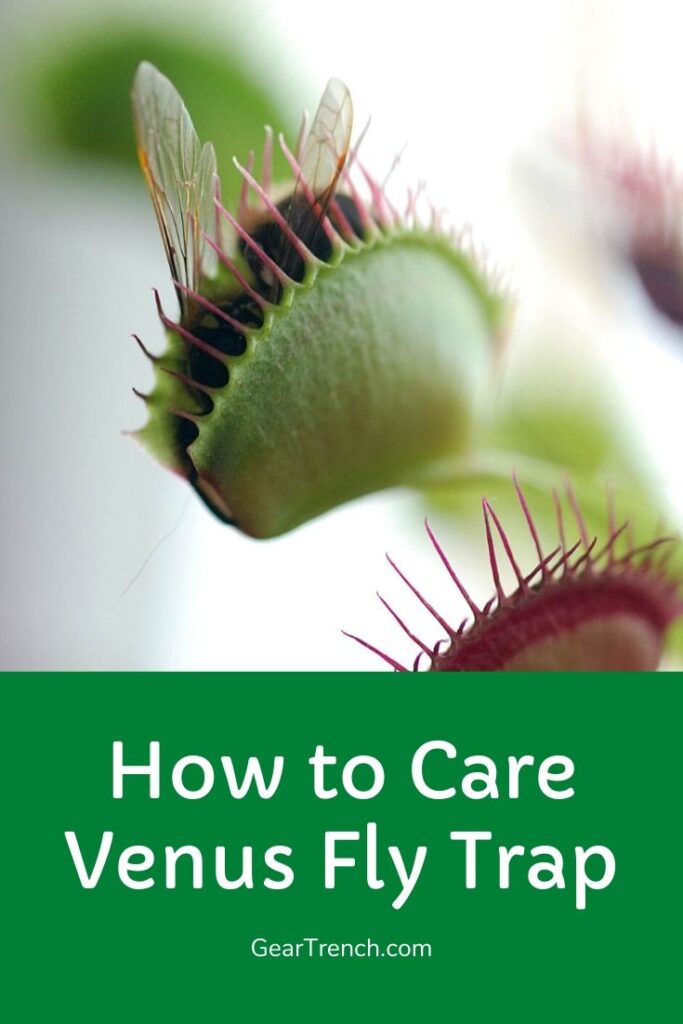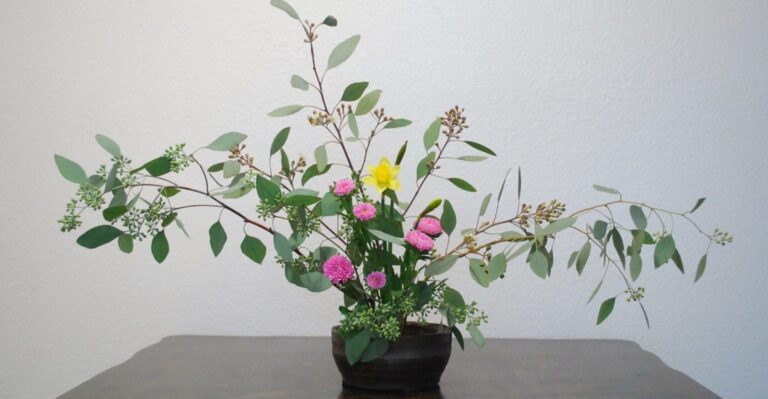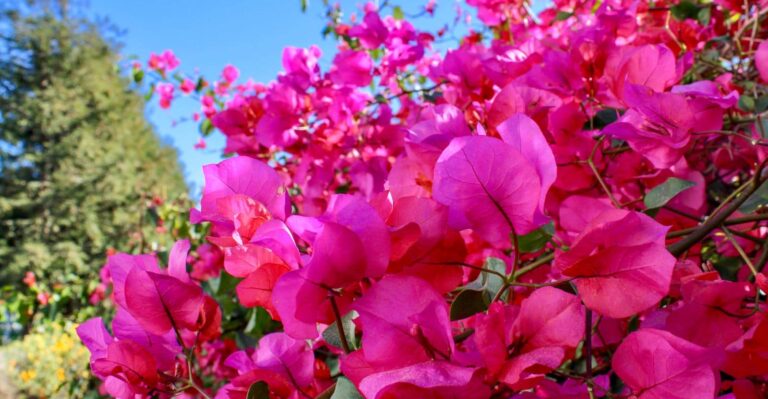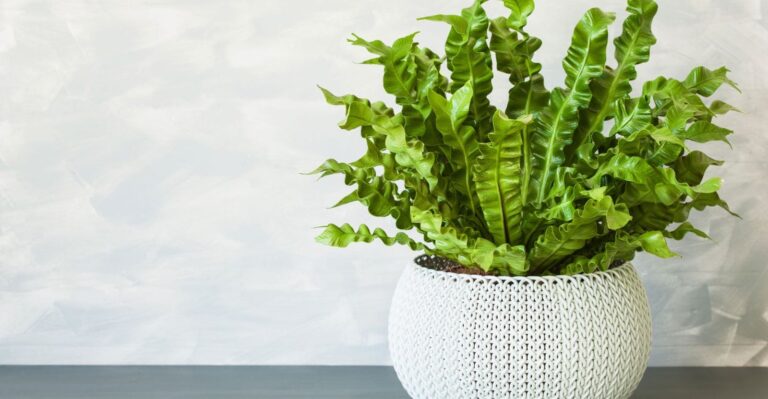Amazon has put together some great Home Gift Deals – save money and get your shopping done at the comfort of your home! Click here to see deals on Amazon
Venus flytrap is a carnivorous plant that feeds on small insects and flies. It’s native to green swamp areas near the coast of North and South Carolina.
There has been a renewed interest among growers these days as they can be grown successfully both indoors and outdoors.
This article will give you all the information that I’ve researched for successful growth and Venus fly trap care from novice to experienced gardeners.
You’ll find it quite a fascinating plant as it grows 5 to 6 inches in diameter and has mesmerizing insect trapping actions. Best of all it doesn’t need nutrient-rich potting soils.
Let’s find out how to grow and care for the Venus flytrap plant.
What is a Venus flytrap plant?
Venus flytrap is a carnivorous plant that eats other small insects and flies. Its scientific name is Dionaea Muscipula and is one of the most iconic carnivorous plants that are recognizable worldwide.
It has cage-like clamps, and it attracts prey using sweet nectar that oozes from its surface. It has a highly sensitive hair-like trigger that, when touched by insects in quick succession, causes the cage to close.
After a while insect dies, and the plant releases the digestive enzymes to dissolve the insect soft tissues. The trap reopens after a week and becomes ready for a new victim.
Where can you buy the Venus flytrap plant?
You can buy Venus flytrap plants from local nurseries or garden centers. Major retailers such as Home Depot, Lowes, and Walmart also sell gardening plants during the summer.
But you may have limited options to choose from these retailers. The best option is to buy it from online stores such as Amazon that sell different varieties of Venus flytrap plants.
Here are some popular Venus flytraps plants and kits that you can buy.
- Adult Sized Venus Flytraps—Fly Trap
- Venus Fly Trap Seeds Growing Kit
- Venus Flytrap “Dente” Carnivorous Plant
- 50 Pieces Flytrap Plants Seed
- Venus Flytrap Potted (Dionaea muscipula, Fly Trap)
What is the best time to plant a Venus flytrap?
If you’re planting a Venus flytrap from seeds, plant it anywhere between late spring and early summer (April to June).
This is the best time as plants get sufficient growing temperatures and moisture to thrive.
List of steps to grow Venus Flytrap from Seeds
Step 1: Prepare the soil: Use healthy weed-free soil to optimize the growth foundation. You can mix peat moss with perlite to provide nutrients and good airflow to the plant.
Avoid using soils that have premixed fertilizers in it as Venus flytraps won’t need many nutrients.
Step 2: Use a right-sized container: Use a box that gives the plant enough space to grow and expand.
Find a container that has a hole at the bottom for water drainage. When you’re at the seed germination stage, pick a container that you can cover from the top to retain moisture inside the pot.
Step 3: Scatter the seed: Moist the soil with a small amount of water but don’t oversaturate it. Keep the soil loose for excellent airflow and scatter the seeds on top of the ground.
Don’t bury the seed inside the soil. You can also do light dusting to help the seed retain moisture. Remember that seeds need full sunlight to germinate properly.
Step 4: Water the plant: Lightly spray it with water and cover the container with a vented lid. It may take anywhere from 10 to 30 days for the germination to start.
You can improve the germination rate to begin between 10 and 15 days by keeping the container in a bit warm and humid environment. After germination, you can remove the top lid.
Step 5: Provide indirect sunlight: Move the container where it can get indirect full sunlight for a minimum of 4 to 6 hours a day during the germination stage.
Avoid placing it in the direct sunlight when growing as it may cause the plant to overhead and wither.
Step 6: Keep soil moist: Water the plant lightly to maintain the surface moisture.
You can also use a spray bottle to spray it directly on the plant and remove dust and debris from the delicate growing plant.
Step 7: Transplant after germination: After 10 to 12 weeks, it becomes ready to transplant. You can check the tiny plant’s overall health as it will grow a pair of small leaves, including a trap leaf.
Remove the soil around the plant when transplanting and place it where you want it to grow permanently.
Which potting soil should you use for the Venus flytrap care?
You should use nutrient-free potting soil that has a loose structure to allow excellent drainage and proper airflow inside.
You can use plain potting soil recommended for container gardening and mix it with peat moss and perlite to get it ready for planting.
Many people make the mistake of buying regular potting mix soil that contains a high amount of compost or fertilizers. Buying plain soil is the best to get started with a growing Venus flytrap.
Also, don’t use garden soil even if it’s easily accessible because it can contain weeds, pests, diseases, and chemicals.
You can fill the pot with the soil mix, leaving space a couple of inches from the top. It helps you water the flytrap plant without the risk of soil and water flowing out of the pot.
Here’s a list of soil that would be suitable for a growing Venus flytrap.
- Perfect Soil SAPROPEL Organic Fertilizer Bed Plant Food
- Black Gold 1310102 16-Quart All Purpose Potting Soil
- Organic Potting Mix by Perfect Plants
How do you keep the Venus flytrap alive?
Venus flytrap is quite a sensitive plant and needs some care to keep it alive and healthy. It won’t grow too large as it grows up to 5 to 6 inches in diameter, and the traps can measure up to 1.5 to 2 inches.
Here are some requirements to keep it healthy.
Growing Medium
Venus flytrap grows best when planted outdoor or in a container. You can plant it outdoors in the USDA zone of 8, but you can still grow in containers for other zones. It makes a great addition as a decorative plant that you can place on a deck or patio.
Ensure that the soil contains fewer nutrients when planting in a pot, and there is enough aeration around the plant roots to prevent root rot. The plant gets its nutrients from the insects that it captures.
Water
Venus flytrap prefers medium moisture levels in the soil. Still, they don’t like it to become overly saturated with water and get soggy. Keep the seeds moist with a gentle spray of water daily.
After the seeds have germinated, you can continue watering the soil to keep it remains moist. Ensure that you don’t overwater the flytrap because too much water in the soil may cause root rot.
You can test it yourself if you need to water the plant by putting your finger in the soil 1 to 2 inches deep. If the fingertip doesn’t feel moist, it’s time to water the soil.
Water the soil thoroughly till it drains out from the bottom of the drainage hole of the pots. This will ensure that water has reached deep into the ground and to the roots.
The best way is to use rainwater as it’s free from hard minerals and other chemicals that you may often find in tap water.
You can use the rain barrel to save the rainwater and use it to water your garden plants. You can also use distilled water to feed pure water to your plants.
Soil
The soil has to be free from weeds and pests, and you can mix it with peat moss. The peat moss in the soil helps retain the moisture.
It prefers slightly acidic soil with 60 percent humidity and mild temperature. You can use a soil pH tester to measure the acidity level in the ground then amend the earth to bring it to an optimal level.
Nutrients
Venus flytrap is a low-care plant and doesn’t need extra nutrients. You don’t need to fertilize it as it works best in soil that contains low nutrients.
Sunlight
Venus flytraps need full sunlight to grow healthy. You can place it in areas where it can get up to 12 hours of indirect sunlight.
Avoid placing it directly in the sunlight. It may cause the plant to overheat and burn its delicate catching leaves.
You can place Venus flytraps in east or west-facing windows that often provide a sufficient level of indirect sunlight.
If you can’t provide it with natural indirect sunlight, you can place a fluorescent or growing bulb 12 inches above the Venus flytrap to encourage growth.
Feeding
Venus flytrap is a unique plant as it’s carnivorous with a snap trap mechanism to capture small insects and flies. You should place it where it can get some insects and flies to feed.
It prefers live insects as when insects trigger hairs on the surface of the trap twice under 20 seconds, the leaf jaw closes quickly, trapping the inset inside.
If you’re planting it indoors and there is no insect or fly, you have to catch one, hold it with a tweezer, and manually activate the trigger to trick the plant that its a live insect.
You can also feed it with dried bloodworms that you can buy from here and feed it once per week. Don’t try to feed it a slice of meat as it may cause the leaves to rot.
If you’re feeding it manually, make sure the feed isn’t larger than 1/3 the size of the trap.
It takes approximately 10 to 15 days for Venus flytrap to digest its feed. The trap will remain closed during the digestion process. It automatically opens once the digestion has completed.
Winter Care
Venus flytraps go dormant in winter, where the leaf turns brown and appears to be dead. But this is the way they rest and protect themselves in winter.
If you have planted it in the pot, bring it indoors so it won’t freeze. Try to keep it in 35 to 50 degrees F temperature.
Keep it in a place where it can get enough light and warmth. Don’t disturb it too much as it doesn’t like moving around when the plant is dormant.
Flowering
Venus flytrap blooms a small white flower, but it demands more care from the plant. In the wild, the Venus flytrap needs to bloom so it can reproduce and develop seeds.
But when planting indoors, the flowering is unnecessary as it may cause it to weaken and die. The flower grows from the middle of the plant. When you notice a growth that doesn’t look like a catch leave, you can remove it safely.
Can you keep a Venus flytrap indoors?
The Venus flytrap is non-toxic to pets and safe to keep it indoor. You have to maintain proper care when placing it indoors to make sure it has enough food available.
You also need to prune any dead or dying leaves to encourage the growth of newer and healthier leaves.
If you notice any mold growing on the stem and leaves, use a fungicide to spray on the infected area. Sometimes, if the mold has caused damage to the leave, you have to remove the affected part.
Do Venus flytraps need to be covered?
The closing and opening of catch leaves require a tremendous amount of effort from the plant. It can only close and open a limited number of times within its lifetime.
Unnecessary triggering of the sensors may result in the premature death of the plant. To prevent accidental triggers, the plant may not close its catch leaves even when activated.
You may not need Venus flytrap to be covered at all the time as it won’t close if it has eaten recently, thus preserving its energy.
What do you feed a Venus fly trap?
Venus flytrap is a carnivorous plant that eats flies and other small insects. Interestingly, the plant won’t eat dead insects, and it has to catch it by itself.
The insect needs to move around to trigger the sensors. The size of the fly or insect also matters. If the insect is too big, the plant won’t be able to hold it inside the cage.
A tiny insect may also not be worth trying to digest as it won’t contain enough nutrients for the plant.
Most of the time, the plant is self-sustainable and can catch and kill insects by itself. But if you’re planting it indoors and don’t have any indoor flies or insects, you have to provide it yourself.
The easiest way to feed the Venus flytrap is to release a small insect or fly inside the cage and trigger the sensors. It causes the trap close to digest it slowly.
It may take around 10 to 15 days for the Venus flytrap to digest and open again to be ready for the next kill. You don’t have to feed it frequently as it can go without eating insects for up to a couple of months.
You don’t have to worry about feeding it if you’re planting it outdoor as they can get enough insects to sustain themselves. However, you need to provide them with suitable water, sunlight, and growing condition.
Conclusion
Growing and taking care of flytrap plants is straightforward. As with all plants, remove the older leaves and traps to help them start trapping new victims.
Provide it with enough indirect sunlight and keep the soil moist all the time to keep it grows healthy. The pinking to reddish color inside the trap looks mesmerizing.
It’s interesting to watch how efficiently it catches flies and insects.

Don’t forget to share this post







